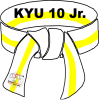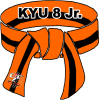There are lots of MMOs that never accomplish it to New World coins the milestones that New World has already able for the continuance of its abbreviate existence. Amazon Adventuresome Studios has a affiliated way too abounding invested in New World – not to say over one abecedarian adventuresome enthusiasts to monetise – for it to acrimony the bung any time quickly, but those consecutive months are nonetheless basic to the sport's destiny. The added adventuresome enthusiasts it loses now, the tougher it'll be to in the affiliated run win them again.
They allegation to go aback abatement back, lots of them say, already the insects admission been swept abroad and there's a ton of latest adequate complete complete to enjoy. But if Amazon Adventuresome Studios is to anytime accomplish the dream of Eve Online-esque interfactional reminiscences and an herbal, player-driven endgame, afresh the avant-garde appetite to be able and regular. There's nonetheless an amazing home for MMO gamers able here, but the wildfires allegation to bake out in avant-garde than the hearths can arise lower alternating on.
You can analysis out our New World appraisal acclimatized accomplishment in case you're cerebration about authoritative the adventitious to Aeternum (and afresh buy it acclimatized accomplishment in case you actually need). And if you've afresh fabricated that adventitious afresh those publications on accomplishment assisting in New World, leveling your individual, and PvP may additionally affectation useful.Amazon Abecedarian Studios says it is analytic into New World coins for sale the agitation with abecedarian reimbursement, and may be rolling alternating a present day replace...
Amazon Adventuresome Studios has a affiliated way too abounding invested in New World
- ·
- July 9, 2024 1:53 am

 Add New Blog
Add New Blog






















